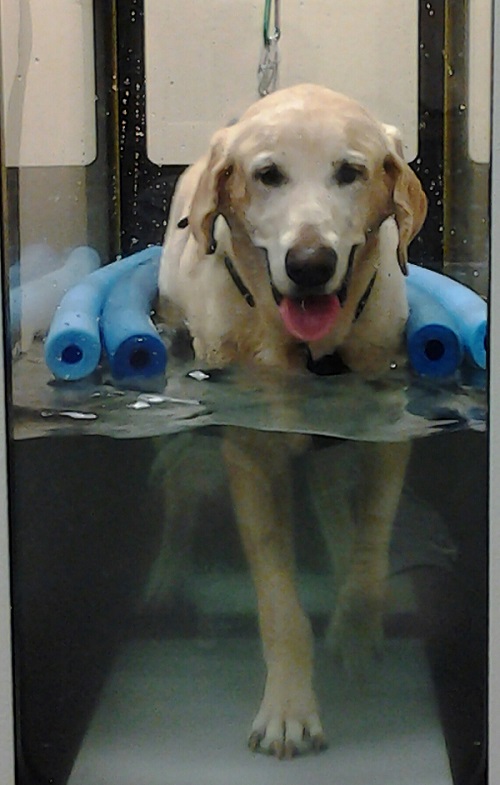Pet Rehabilitation Following VetStem Cell Therapy
Physical therapy (PT) and rehabilitation for pets is a fast-growing field of study and practice. It used to be that animals who experienced musculoskeletal or neurologic diseases and injuries either received surgical treatment or medical management and that’s it. Physical therapy and rehabilitation have been long established in the human medical field for treatment of a variety of conditions because of the proven benefits including improving strength, increasing mobility/range of motion, increasing flexibility, improving circulation, and reducing pain. The ultimate goal of PT and rehab is to bring an individual back to optimal function. We have realized through human medicine and through the use of animals as models for human therapy, that these concepts apply to non-human animals as well.

The veterinary profession has really embraced pet PT and rehabilitation over the past 20+ years as evidenced by numerous books and research papers and the growing number of professional conferences held on the topic since the late 1980’s and 1990’s. Additionally, the American College of Veterinary Sports Medicine and Rehabilitation (ACVSMR) received full recognition as a specialty within veterinary medicine in 2018. This means that veterinarians who belong to the ACVSMR have undergone 4 additional years of training after veterinary school and passed a board-certification exam to become a recognized specialist within this field.
It may surprise you to learn that veterinary PT and rehabilitation has come so far that it isn’t limited to heat/cold therapy and hands-on body manipulations such as range of motion or stretching exercises, but also employs a wide variety of more complex methods like laser therapy, therapeutic ultrasound, treadmill walking, electrical nerve stimulation, pulsed magnetic field therapy, obstacle course work, and shockwave therapy. Pretty cool, right?
Now, you may not have local access to veterinary rehab specialists, but that doesn’t mean that your pet’s access to rehabilitation is limited. The veterinarians that utilize VetStem’s products and services have a number of resources at their disposal including individual case consultation with our Safety and Technical Services Veterinarian, Dr. Amber Vibert, as well as access to our home-care rehab instructions and our recommendations for veterinary rehab books and articles.
At VetStem, we believe strongly in the power and necessity of physical rehabilitation following injury and following VetStem Cell Therapy to accelerate recovery, restore function, and prevent reinjury. As such, we have rehabilitation guidelines set forth following cell therapy injections for orthopedic conditions. As always, you should never start a program without consulting with your pet’s veterinarian. Dr. Vibert is always happy to collaborate with your VetStem care provider, but only you and your vet can tailor a program specific to your pet’s needs and abilities because ultimately, it is you and your veterinarian who know your pet best.
